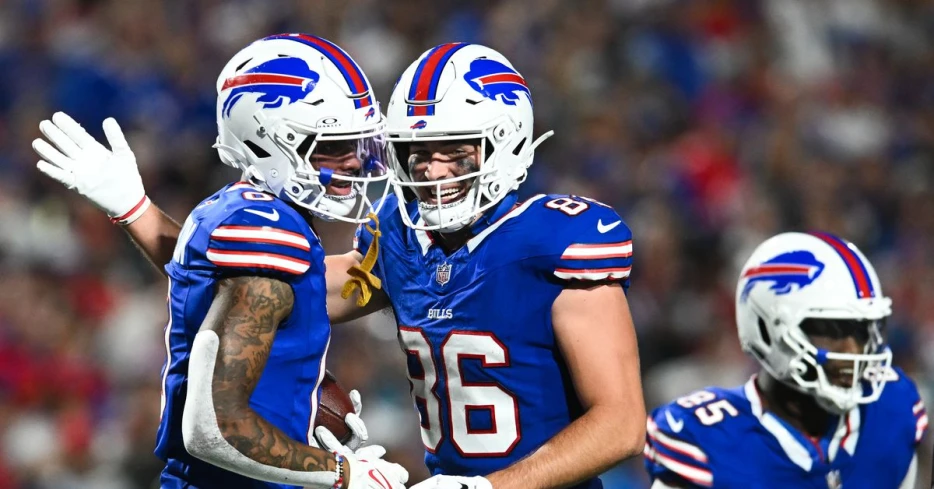
 Buffalo Rumblings
Buffalo Rumblings
Too much competition and the luxury of having Josh Allen puts nabbing a pass catcher on the back burner
Roughly two weeks ago wide receiver DK Metcalf was traded to the Pittsburgh Steelers for a 2025 second-round pick and he received a five-year $150 million contract extension, a move the Bills could have easily matched in trade compensation but would have taken some finagling to work financially. General manager Brandon Beane ultimately decided not to go all in and settled for Josh Palmer at a reduced rate of three years and $29 million.
This decision made it clear that Beane believes the receiver room is good enough for 2025. On the surface, it’s a group of players with a lot to prove next season, but also enough talent to ensure the Bills likely shy away from selecting a wide receiver early in the 2025 NFL Draft.
The last two drafts Beane spent Buffalo’s first selection on a pass catcher, with tight end Dalton Kincaid in 2023 and wide receiver Keon Coleman in 2024. Both players have shown flashes of being viable long-term options for quarterback Josh Allen and offensive coordinator Joe Brady’s offense, but they each operated within the confines of a low-volume role in 2024. Injuries also robbed both of significant opportunity, as Coleman missed three games with a wrist injury and Kincaid was reportedly playing through a torn PCL.
During the 2024 season, Kincaid posted the worst catch rate (58%) among 35 qualified tight ends but still ranked near the top of the NFL for yards per route run and yards after the catch/per reception for tight ends. Buffalo will have a fairly big decision next offseason whether or not to pick up Kincaid’s fifth year option. Allowing him space to be a top option should help answer those questions.
Coleman suffered from drop as a rookie but he was also an immediate workhorse for the Bills as a boundary receiver. From the start, Coleman was used as the Buffalo’s top outside target both in contested catches and deep balls (fifth in average depth of target).
The team has already invested high-end draft capital into offensive weapons, so another pick geared towards receiver would just muddy the timeline of the roster and force somebody to feel like a wasted pick. If neither Coleman or Kincaid make a leap in 2025, Buffalo could reconsider their futures in Buffalo, but if the team was unsure of either player at this point they would have made a bigger splash in free agency.
A primary reason Josh Palmer became the preferred free-agent signing was the money the Bills have tied to tight end Dawson Knox and wide receiver Curtis Samuel in 2025. Knox and Samuel account for large dead -cap hits if released this season, but they remain viable cut options in 2026 — clearing up around 7% of Buffalo’s entire salary cap...